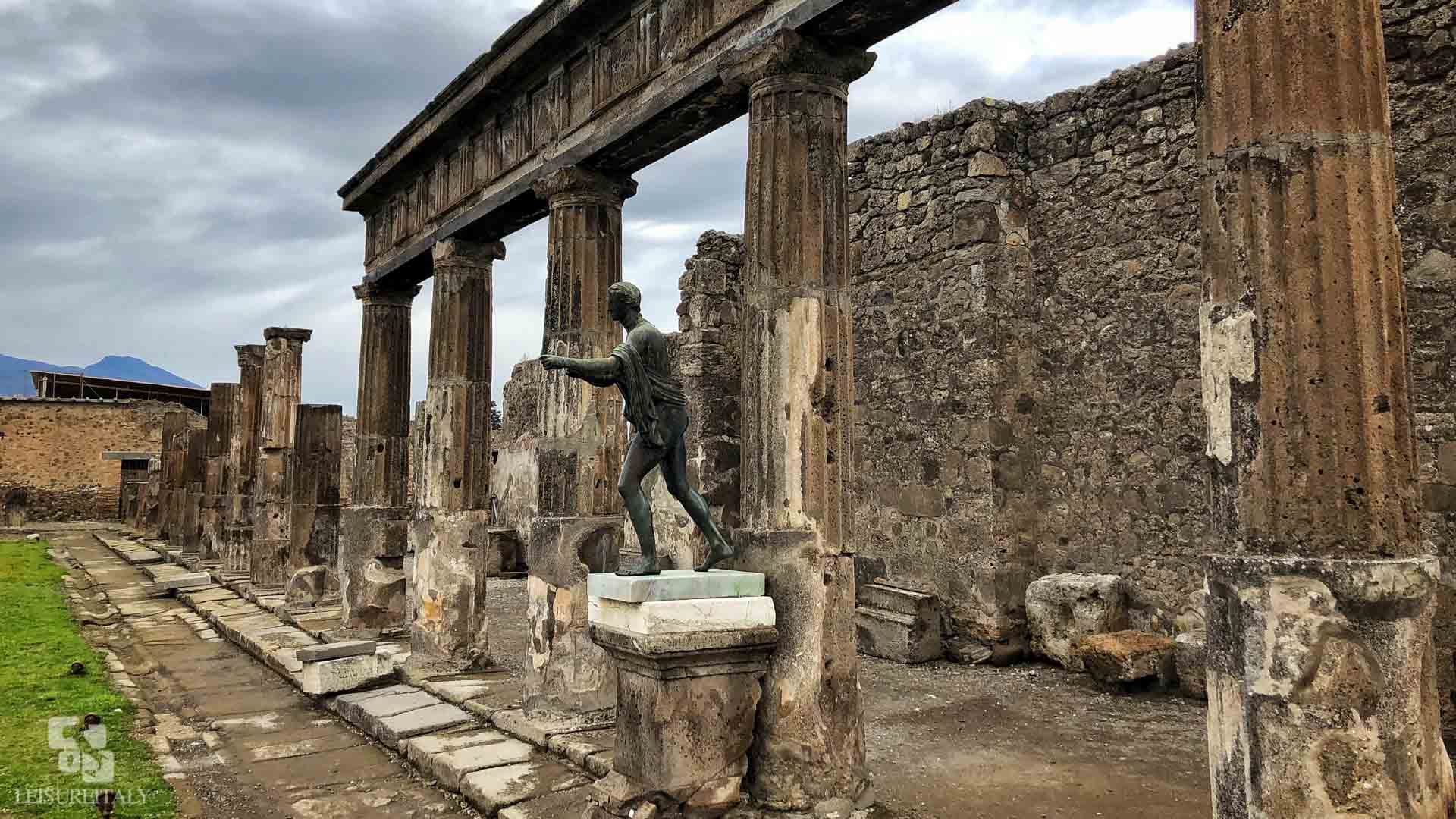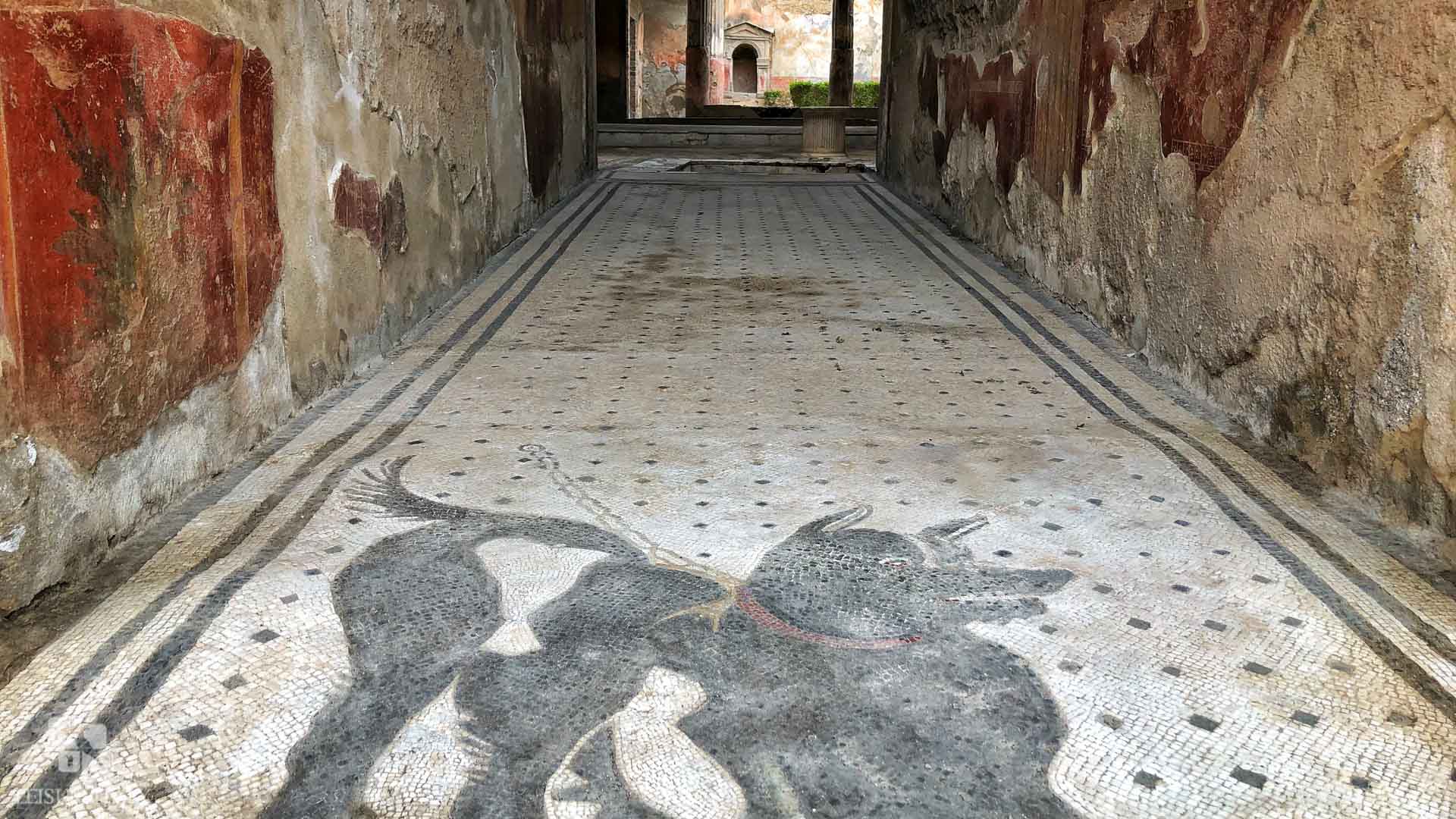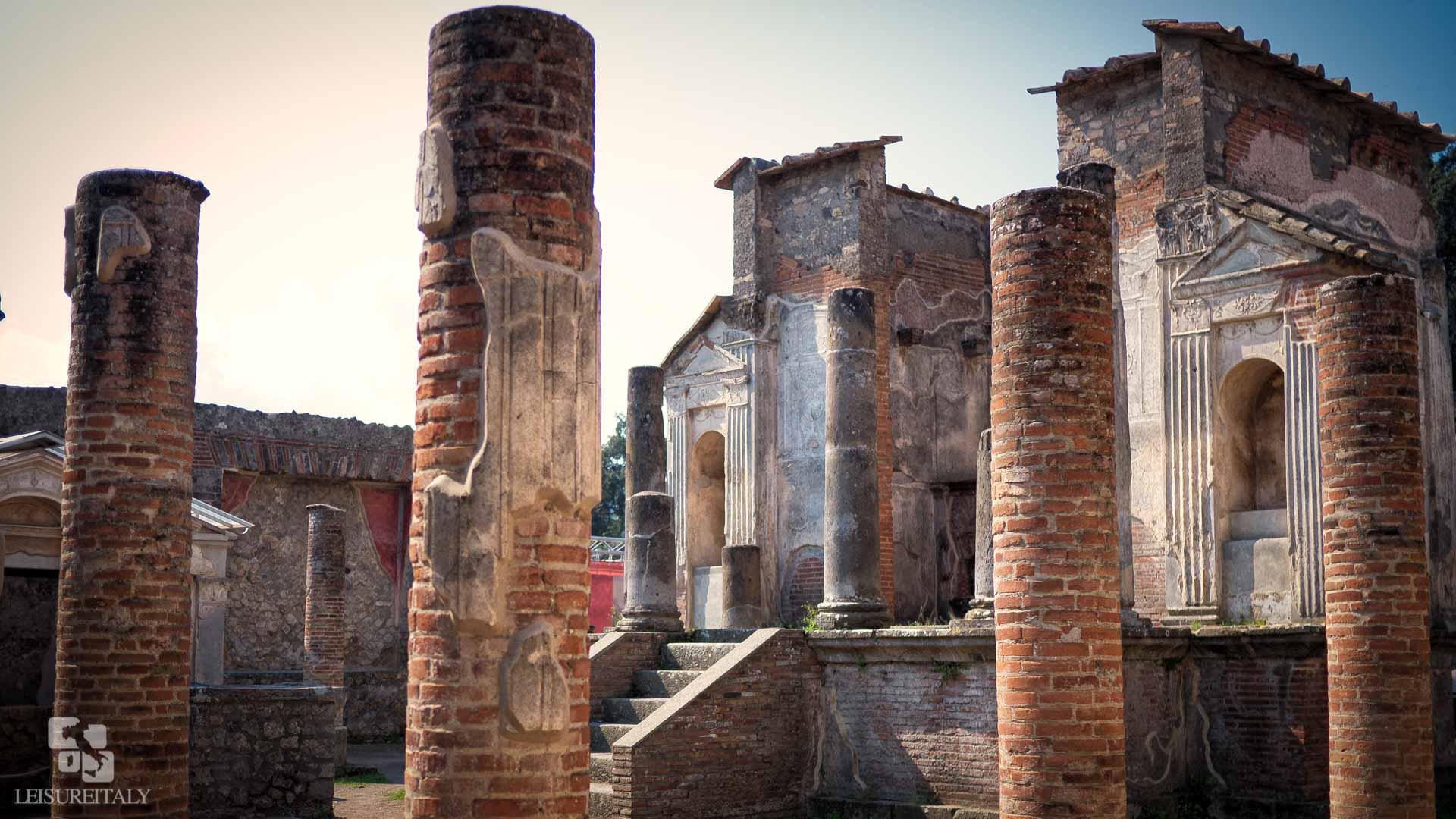Guided Walking Tour
The Pompeii site extends on a surface of approximately 160 acres. To make the best of your time, Leisure Italy offers qualified guided service.
The following is a suggested itinerary for our private guided walking tour: let us know would there be any special request!
In Pompeii, you will first admire the city walls, dating back to the pre-roman Pompeii (4 centuries BC). One of the best-preserved ancient gates is called Porta Marina. It connected Pompeii with its port, with a path for charts and one for people.
Once in town, you will be walking on the original road made of basalt stone (volcanic rock), and you will notice on the ground hundreds of little white spots made of travertine used to reflect torchlight (nowadays “cat’s eye” on the driving roads).
Your attention will be captured by big blocks of basalt emerging from the road: they were stepping stones used by pedestrians to avoid getting wet when it rained; differently from other Roman towns, Pompeii didn’t have a complete sewer system because the city was built on top of a lava platform too hard to be worked.
The city center is called Forum. It hosts all the buildings with a public function: Religion (the Temple of Apollo, the Capitolium and the Temple of the Emperor), Trade (the meat and fish market called Macellum, the textiles market headed by a priestess named Eumachia), Administration (the Basilica) and Politics (Comitii). Other facilities in the Forum were exchange offices, public restrooms and a public scale (tabula mensurae) where to compare and weigh farmer’s products. In the Forum, you will also see a display of the famous human casts.
Close to the Forum were public Bath-Houses where both men and women (in different sections), poor and wealthy, free persons and slaves could access daily hygiene. Pompeii had three such complexes in town plus two more right outside town, and they all had the following facilities: a changing room (apodyterium), a tepid room (tepidarium), a hot room (calidarium) and a Gym (Palestra).
You will notice several places fronting the road with large vases built in a masonry counter: this is what the Romans called popinae, today’s taverns! These jars were full of food and beverages, and many ancient Pompeians would stop in such places for lunch.
You will recognize some of the Bakeries of Pompeii, with their ovens and grinding machines: incredible but true, some round carbonized loaves of bread were found during the excavations. These are on exhibit at the Archaeological Museum of Naples, together with more carbonized organics such as almonds, pine cones, figs, dates, etc.
Your visit would be incomplete without the red light district: the Brothel (Lupanare) shows an interesting display of roman frescoes featuring several erotic images!
Do not miss the chance to discover Pompeii’s places for public performances: an outdoor Theatre (for comedy and tragedy), an indoor theatre (Odeion, for mimes and declamation of poetry) and a big Amphitheater (for games like gladiators or beast fights). You shall visit at least one of those places.
After the tour at Pompeii, you could stop for a few minutes for a fresh-squeezed orange juice or to browse the souvenir shops if you wish.













Tour Reviews
Best Tour ever ! As Kiwis travelling through Europe, visiting historic sites and learning about ancient history is such an excitement. Stefania was fantastic, she was extremely knowledgeable and helpful. We learnt so much from her, she was energetic ( even in the 35+ heat) She answered all our questions, she was easy to understand. We had a fantastic time, that will be a treasured memory.
Fabrizio was super knowledgeable, cordial and just the perfect private tour guide. We learned all secrets of the city. He took us around spots that avoided the masses and gave us a truly memorable, bespoke experience. Thank you, Fabrizio